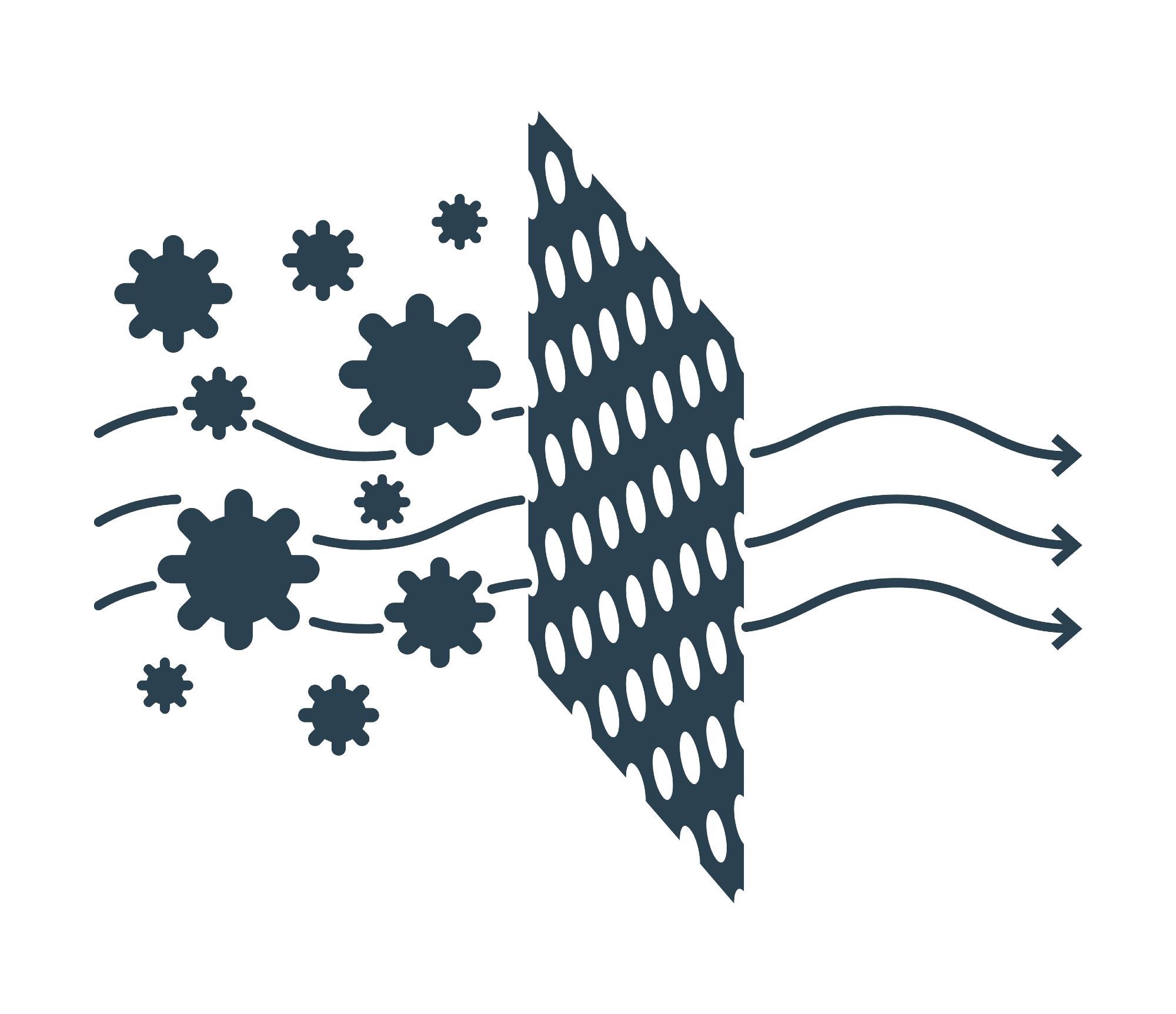Removing per- and poly-fluoroalkyl substances (PFAS) from water has become critical in water purification. In an article recently published in ACS Applied Materials and Interfaces, researchers demonstrated MXene nanosheet functionalization on thin-film composite (TFC) hollow fiber nanofiltration (HFN) membranes via interfacial polymerization (IP) to enhance the removal of perfluorooctane sulfonic acid (PFOS) from water.

Study: Functionalized-MXene Thin-Film Nanocomposite Hollow Fiber Membranes for Enhanced PFAS Removal from Water. Image Credit: Dmitry Kovalchuk/Shutterstock.com
A selective layer of MXenepolyamide (PA) was synthesized on polysulfone (PSF) hollow fiber support via IP resulting in the formation of MXene-PA thin-film nanocomposite (TFN) membranes.
PFAS Rejecting Membranes
The rise in water consumption for human activities resulted in water system contamination with synthetic chemicals. PFAS are synthetic fluorinated compounds characterized by a hydrophobic tail and hydrophilic head. The fluorine-carbon bonds in the hydrophobic tail cause difficulty in the breakdown of PFAS and cause their accumulation in the environment. The manufacturing of household products is the primary source of PFAS contamination.
Adsorption and membrane separation methods can remove PFAS from water. Exploring TFC membrane revealed the efficiency of nanofiltration (NF) membranes over reverse osmosis (RO) membranes. Due to lower pressure requirements, NF is an efficient and cost-effective separation process to remove PFOS from contaminated water. NF retains PFOS due to its high molecular weight and PFOS’s negative surface charge.
The NF membrane and TFC membrane’s PFOS rejection capability and water permeability are factors controlling separation at permeability rejection, and the TFC membrane’s permeability and rejection depend on the PA layer’s chemical and structural properties. Thus, to make NF a sustainable and efficient water treatment technology, there is a need for a novel NF membrane with tuned and functionalized PA layers that enhance the permeability and removal of PFOS.
The size-exclusion mechanism is the primary mechanism behind the PFAS rejection. Further PA surface tuning enhances the electrostatic interaction and improves the negatively charged PFAS’s rejection. PA selective layer functionalization is possible by adopting materials and techniques, including 2D/3D materials and polymers. MXene is a new generation additive with high electrical conductivity, high specific area, hydrophilicity, and versatile chemistry.
MXene−TFN Membranes
In the present study, the team demonstrated the construction of MXene−TFN membranes on hollow fiber support that enhances the water permeability with PFOS rejection. Furthermore, the salt and PFOS removal performance of fabricated MXene−TFN membranes was evaluated and compared the results with TFC-NF membranes.
Characterization of the selective PA layer of MXene−TFN membrane helped the researchers understand the connection between PFOS removal membrane performance, water permeability, antifouling, salt removal, and the MXene nanosheet-induced physicochemical changes of the selective layer.
Research Findings
The X-ray diffraction (XRD) patterns of pristine MXene showed a characteristic (001) peak and (002) peak shifted from 9.41 degrees to an angle of 6.29 degrees after etching. Near-complete aluminum etching and MXene synthesis was confirmed by the absence of polycrystalline nanolaminates of ternary carbides and nitrides (MAX) phase peak at 39 degrees.
The Mxene layer’s d-spacing was 1.404 nanometers, with 1-nanometer single layer thickness and 0.404 nanometers interlayer spacing; it was smaller than the PFOS molecule’s Stokes radius.
The atomic force microscopy (AFM) image of the Ti3C2Tx single layer had a flake size of 0.2 micrometers with a thickness of 1 nanometer. The Fourier transform infrared spectroscopy (FTIR) studies on MXene revealed the presence of two characteristic peaks at 1657 and 1737-centimeter inverse, which corresponds to the vibration of oxide (O) functional groups, hydroxyl (OH) at 1371-centimeter inverse, and fluorine (F) at 1083-centimeter inverse.
Particle size larger than PA thickness results in a defective PA layer, meaning that the MXene nanosheet’s size was an important factor and is a function of preparation methods, including shaking time, number of washing steps, and centrifugation since larger flakes were anticipated to delaminate with the weakening of interlayer bonds.
The team observed a decrease in the MXene nanosheet’s average particle size with an increase in the number of washes. Furthermore, a 10-minute ultrasonication of MXene nanosheets resulted in a reduction in particle size of the nanosheets. In addition to the decrease in particle size, ultrasonication increased dispersion uniformity.
Conclusion
In summary, the researchers of the present study reported the construction of a novel MXene−TFN hollow fiber NF membrane by employing MXene nanosheets to PA selective layer. The MXene nanosheet as an additive-enhanced PFOS removal from water without affecting salt rejection of membranes and enhanced the membrane flux.
The PA layer was functionalized by incorporating MXene nanosheets into the aqueous phase during IP, resulting in surface charge and morphology tuning of the PA layer to enhance the removal of PFOS while retaining the water permeability.
Reference
Le, T., Jamshidi, E., Beidaghi, M and Esfahani, MR. (2022) Functionalized-MXene Thin-Film Nanocomposite Hollow Fiber Membranes for Enhanced PFAS Removal from Water. ACS Applied Materials & Interfaces. https://pubs.acs.org/doi/10.1021/acsami.2c03796
Disclaimer: The views expressed here are those of the author expressed in their private capacity and do not necessarily represent the views of AZoM.com Limited T/A AZoNetwork the owner and operator of this website. This disclaimer forms part of the Terms and conditions of use of this website.